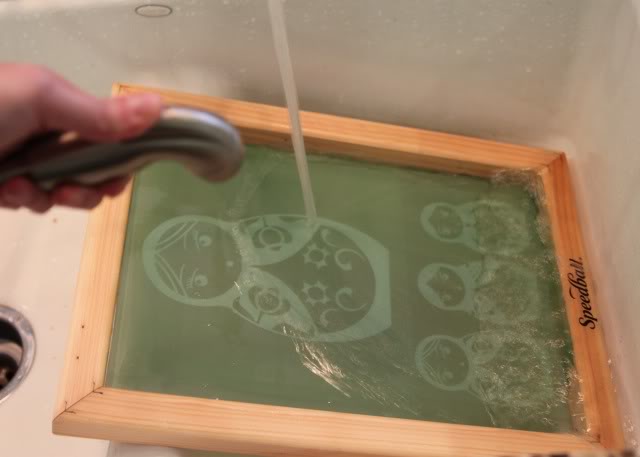

Where can I store emulsion coated screens?Īll you need is a dark and dry place. In general, try to use your coated screens within a week or two to avoid resistance from washing out the emulsion. Use a dehumidifier if your area gets too humid. This means keeping them in a dark room, dry and at room temperature. Nope, emulsion coated screens can last a few weeks with proper storage conditions. Must I use the screens right away once it’s coated with emulsion? Just plan your move with a purpose and don’t leave your unexposed screen lying around in the light. Regular fluorescent room lights are fine to work under.

But make sure it doesn’t come into contact with direct sunlight otherwise the exposure process will begin. Yes, after your emulsion is dry you can take it to where you’re exposing it. My emulsion-coated screen is already dried, is it safe to bring it out of the darkroom? Alternatively, you can coat your screens during the night if you don’t have such a space. Many printers work in a room or basement with minimal to zero sunlight and use indoor lighting such as a fluorescent lamp or a yellow bug light. Emulsion is an ultraviolet (UV) light sensitive chemical, so unless you’re coating screens under direct sun-light, you should be fine indoors. Is a dark room necessary to coat my screens? This can cause blockages in the emulsion once it hardens. But make sure your area is clean because sand, dust and dirt can circulate in the air and get stuck on wet coated screens. I personally keep two fans running in my darkroom at all times. Dehumidifier (skip if your environment is dry).They have the perfect setup for quick drying which are But I know printers who wait only 30 minutes before moving on to exposure. Most manufacturers suggest a good 24 hours for a completely dried screen. How long should I let my coated screen dry? I also suggest using a smooth rounded edge scoop coater on these screens instead of the sharp edge. As long as you’ve taken the proper screen prep – clean, de-haze, degrease, etc., and your exposure times are perfect, you should have no problems. Unless you’re making a ton of prints (more than 100), you can get away with coating only one side (the ink side). Can I coat emulsion on only one side of the screen? Prepare yourself mentally so you don’t get too discouraged too quickly in the beginning. You should remember that nobody gets it right the first time. Test 3: 2/2 (1 coat print side, 1 coat ink side, 1 coat print side, 1 coat ink side).Test 2: 2/1 (1 coat print side, 1 coat ink side, 1 coat print side).Test 1: 1/1 (1 coat print side/ 1 coat ink side).For starters, use these coating combos for your starting point: Since there are many factors (ink type, emulsion type, mesh count, etc) that come into play, it’s up to you to find your balance. How many coats of emulsion should I have on each side of the screen? It’s more expensive than the diazo, but in my opinion worth every penny. The dual-cure emulsion, which is a combination of diazo and SBQ-based emulsion, cures faster and creates a thicker stencil.

However, it’s a little more forgiving when it comes to practice and getting your feet wet. I would go with the diazo emulsion which is cheaper but will react slower, increasing your exposure times. What kind of screen printing emulsion should I buy?Ī diazo emulsion, which you need to add a water resistant sensitizer to the mix, or a water resistant dual-cure emulsion. My design has some fine details, which emulsion is right for me? Emulsion and screen preparation


 0 kommentar(er)
0 kommentar(er)
